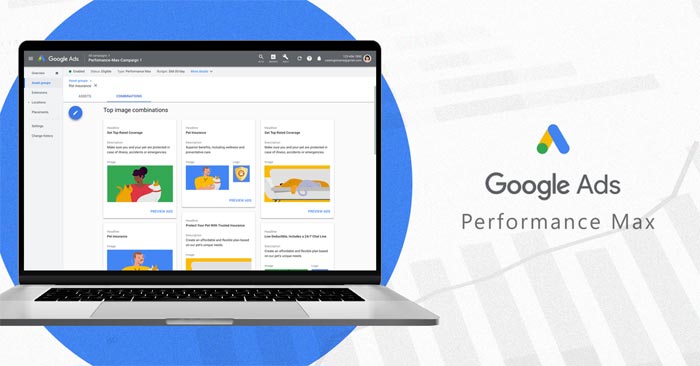The Starter Guide to PPC Marketing

In today’s fast-paced Internet-driven world, consumers turn to search engines when seeking out information about products and services. While SEO is a great way to drive traffic and increase site visits, clicks on paid ads beat out organic clicks by nearly a 2:1 margin. In other words, 64.6% of searchers clicks on paid ads when they’re looking to buy an item online.
With over 60% of searchers claiming to click on search ads, digital marketers know that PPC advertising or pay per click marketing is a powerful tool for brands to boost online visibility, generate leads, and get their business in front of people already looking for their products and services.
What is PPC Advertising?
PPC stands for pay per click, a model of digital marketing where you pay a fee each time someone clicks on your ad. PPC advertising or marketing is basically a way of buying visits to your site, as opposed to SEO that lets you organically earn those visits.
A lot goes into PPC advertising management: scoping out the competition, researching and selecting the most relevant keywords, organizing those keywords into ad groups and campaigns, and setting up landing pages optimized for conversions.
Search engines like Google reward advertisers who create relevant, targeted PPC marketing campaigns by charging them less for each click. If your ads and landing pages satisfy a searcher’s intent, Google charges you less per click, leading to higher returns for your business. If you want to succeed in Google Ads management, it’s vital to learn how to do PPC marketing the right way.
For a comprehensive overview on the basics and complexities of PPC management, head over to our article on what is PPC.
The Five Types of PPC Advertising
There are multiple types of PPC marketing ads. The one you select for your campaign depends on your goals and how you want to reach your target audience. Each type of PPC advertising ad provides you with different opportunities and benefits. Let’s discuss each of them.
Search Ads
Search ads are the most common type of PPC marketing. They appear above and below the search results page, typically marked with an “Ad” tag to indicate paid content.
Google ads are the most popular type of search ads. Many PPC marketers leverage the benefits of Google Ads management to create targeted ads that capture search traffic for brands.
Display ads
Display ads show your PPC ads across Google partner websites all over the internet. This allows you to reach people while they’re browsing sites, apps, or even YouTube videos.
With display ads, you can target specific types of people to see your adverts. For instance, you can select your exact target market, choose previous visitors of your site, or pick industry-relevant websites to show your PPC advertising. You can also use both image and text ads to increase brand awareness and engage searchers with a visual format.
Social Media Ads
Social media advertising is a great opportunity to show ads to your target audience right in their newsfeed or social hangouts. You can target users based on their age, interests, gender, and likes. For example, Facebook ads show adverts to users who are more likely to convert.
With social media ads, you can be selective in what you share and promote pretty much anything. You can send people to landing pages or simply highlight a post you want more people to see.
Shopping ads
Google Shopping ads are beneficial to retailers who want to catch the attention of potential customers. Unlike search ads, shopping ads provide users with a photo of the product, a title, a price, the name of the store, and other details.
Remarketing ads
Ever been on a website and then an ad about that site or the products you were looking at pop up somewhere else? That’s the power of remarketing.
Remarketing ads are an effective method of PPC advertising as they target users who have already shown interest in your website and your products. Seeing your ad again may just be the push they need to convert or make a purchase.
The Power of Google Ads Management
Earlier in the article, it was mentioned that Google ads are the most popular type of ads. Given Google’s massive reach, the search engine is the best place to spend money on ads that reach your target audience.
In the Philippines, Google’s market share is an outstanding 97%. That only means your potential customers are using the search engine to look for your products and services. With Google Ads management as your primary method of PPC advertising, you can drive qualified traffic to your business, increase conversions, and improve your overall ROI.
How Does Google Ads Management Work?
If you want Google ads to display your ads in search results, you will have to bid on keywords or search terms. If you win the bid, you will be placed at the top of the search results page for that keyword.
Many factors impact the ability of your ads to rank high. Let’s discuss them below.
AdRank and Quality Score
AdRank determines your ads’ position on the search results while Quality Score is one of the two factors (the other one is bid amount) that contribute to your AdRank.
Your Quality Score is based on the relevance and quality of your ad. Google measures this using your ad’s click-through rate or CTR. Your CTR is dependent on how well it matches user intent, which you can base on three key factors:
- The relevance of your keywords
- The ability of your ad copy and CTA to meet user expectations
- Your landing page’s user experience
Many providers of PPC campaign management services focus their attention on the Quality Score, even before they increase their bid amount. This is because the higher the QS, the lower your cost-per-click will be and the higher your position on the search results.
Location
During the setup of your Google ad, you will have to select a specific location or geographical area where your ad will be shown. If you have a physical store, this should be within at least 10km of your physical location. If you have an ecommerce store and offer physical products, set your location in the places where you ship. If you provide a product or service available worldwide, then the sky’s the limit.
Your location settings play a vital role in your ad’s placement. For instance, if you own a skin care clinic in Makati City, someone in Cebu City that enters “facial peel service” will not see your result, no matter your AdRank. That’s because aims to provide searchers with the most relevant results. Even if you’re paying for ads to be shown, they will only be displayed if they’re related to a user’s search query.
Keywords
Keyword research is just as crucial for paid ads as it is for SEO and organic search. Your keywords should match searcher intent as much as possible. This lets Google match your ad with search queries relevant to your selected keywords.
Each ad group you create within your PPC management campaign will target a small keyword set. Three to five keywords is an optimal number. Google will then display your ad based on those selections.
Match Types
When it comes to the keyword selections for your PPC marketing strategy, match Types provide you with a little wiggle. They tell Google whether your ad should match a search query exactly or if you want your ad shown for semi-related queries. There are four match types to choose from:
- Exact Match preserves your keyword phrase in the exact order it’s written. In this case, “skin care clinic in Makati” will not show up if someone types “skin care services” or “skin care Makati.”
- Broad Match uses any word within your keyword phrase in any order. For example, “skin care clinic in Makati” will match “skin care clinic” or “Makati skin care clinic.”
- Phrase Match matches with search queries that include your keywords in the exact order. However, it may include additional words before or after the phrase. For example, “skin care clinic in Makati” can yield “affordable skin care clinic in Makati” or “skin care clinic with affordable rates.”
- Modified Broad Match lets you lock in specific words within a keyword phrase by putting a plus sign (+) in front of one or more words. For instance, “+skin care clinic in Makati” could yield “skin care routine” or “skin care services.” This allows you to attract more traffic than Exact Match and drive more qualified traffic than Broad Match.
If you’re just new to PPC management, start with Broad Match before you move on to narrower match types. However, since your ad will likely be ranking for multiple queries (some irrelevant), keep a close eye on your ads and make the necessary changes as you gain additional information.
Headline and Description
Your ad copy can make or break the click on your ad. It’s important to create ad copy that aligns with your selected keywords, matches the searcher’s intent, and addresses the pain points of your audience with a clear solution.
Start a PPC Advertising Management Campaign Today
Google Ads has become more competitive in recent years, but the platform still offers growth opportunities and revenue for brands of all types and sizes. It’s a worthy investment, given that Google Ads services and prices generate good ROI. When used correctly, PPC advertising can be your gateway to break into crowded markets and experience quick business growth.
Contact Truelogic today to learn more about PPC marketing. Discover how a Google Ads management campaign can drive clicks and convert leads for you.








